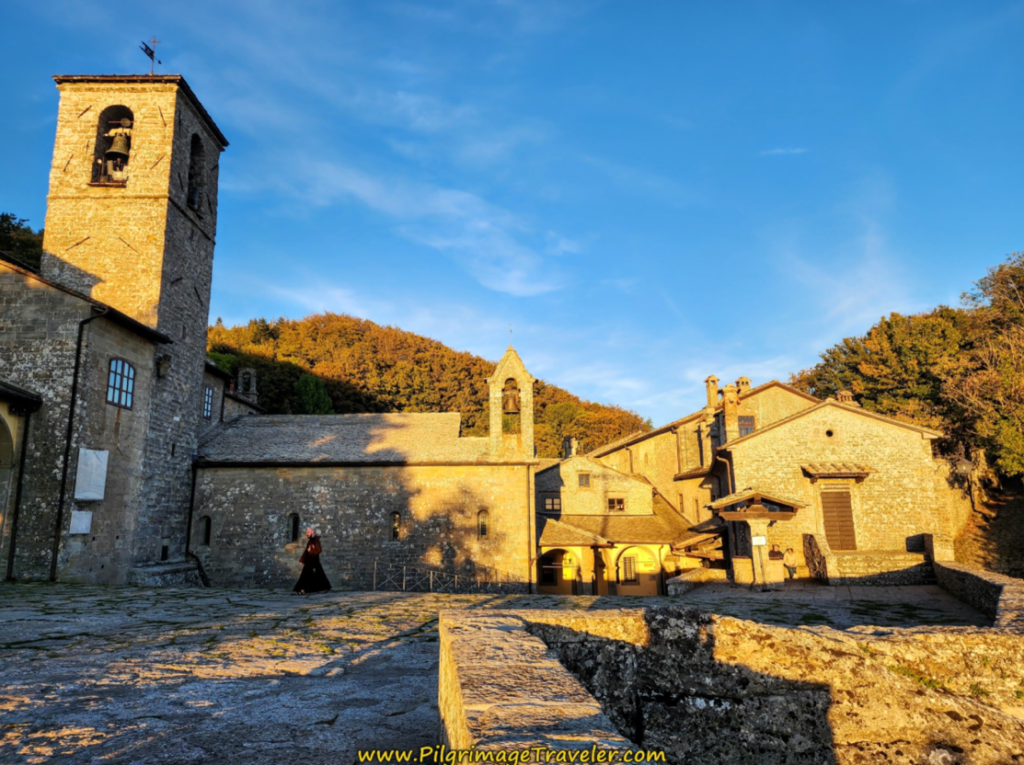By Donnie Yance
October 4th marks the feast day of St Francis. I love to celebrate by sharing thoughts inspired by this humble man filled with so much spiritual wisdom.
In our hyperconnected world of instant notifications and same-day delivery, patience has become a rare commodity. Yet for healthcare professionals and individuals alike, cultivating patience remains one of the most essential skills for both personal well-being and professional effectiveness. The wisdom of St. Francis of Assisi, who lived over 800 years ago, offers timeless insights that modern science continues to validate.
The Franciscan Foundation of Patience
St. Francis of Assisi understood patience not as passive waiting, but as active trust in divine timing. In his Prayer of St. Francis, he sought to become “an instrument of peace,” recognizing that true peace requires the patience to endure suffering without losing hope. His famous saying, “Start by doing what’s necessary; then do what’s possible; and suddenly you are doing the impossible,” reflects a patient, incremental approach to transformation. This mindset resonates deeply in modern-day healthcare settings.
Francis taught that patience is fundamentally about accepting what we cannot control while remaining committed to what we can influence. This philosophy proved revolutionary in his time and remains profoundly relevant for modern healthcare professionals who daily face the limits of medical interventions.
Perhaps nowhere is this more evident than at La Verna, the sacred mountaintop sanctuary where St. Francis received the stigmata. Far from civilization, perched high in the Tuscan mountains, this remote monastery represents the ultimate expression of Franciscan patience—a place where time seems to slow, and the soul finds the stillness necessary for divine encounter.
A Pilgrimage to Patience: Lessons from La Verna
During a three-day retreat to La Verna earlier this Summer of 2025, I experienced firsthand the transformative power of Franciscan patience. As a Third Order Franciscan with three years of experience in an Eastern Rite Byzantine Franciscan monastery, I thought I understood patience. But standing at the Sasso Spicco—the overhanging rock where a cross marks St. Francis’s sacred meditation area—I discovered deeper dimensions of patience.

We began our pilgrimage at the peaceful, secluded and phenomenal setting of the La Verna Sanctuary where the Way of St Francis begins.
The journey to La Verna itself teaches patience. After a bus ride through winding mountain roads, we arrived at this sanctuary that remains deliberately isolated from our modern world. Guided by a Franciscan brother through the tiny chapel where we celebrated Liturgy, I was struck by how the physical remoteness created space for spiritual intimacy. The most calming effect on one’s soul comes not from rushing toward revelation, but from allowing stillness to do its work.
This experience revealed a profound truth: patience is not merely about waiting—it’s about being still and allowing that stillness to mold us more into our Divine self. When we embody this divine patience, we become conduits for bringing more love and goodness to the world, whether in healthcare settings or in daily life.

Here is the overhanging rock that defines the space that is the Sasso Spicco, where a cross marks the sacred meditation area. This area also has the most calming effect on one’s soul. As we descended to this location, we experienced a dramatic temperature drop from around 80 degrees to 50 degrees. The sudden chill made us feel as though we had stepped into the heart of the mountain itself.
The Science of Patience in Healthcare
Modern research validates St. Francis’ intuitive understanding of the power of patience. Studies show that healthcare providers who practice patience experience:
- Reduced burnout rates: A 2019 study in the Journal of Medical Internet Research found that mindfulness-based patience training reduced physician burnout by 23% over six months ¹
- Improved patient outcomes: Research published in Patient Experience Journal demonstrated that the patients of more patient healthcare providers had 15% better treatment adherence ²
- Enhanced diagnostic accuracy: A landmark study in Academic Medicine showed that physicians who took time for patient reflection made 18% fewer diagnostic errors ³
For patients, cultivating patience during treatment and recovery correlates with:
- Better pain management outcomes
- Reduced anxiety and depression during chronic illness
- Improved relationships with healthcare providers
- Greater treatment satisfaction
The retreat experience at La Verna demonstrated how these clinical benefits flow from a deeper spiritual reality.
When healthcare providers cultivate the kind of patience that connects them to their divine nature, they naturally become more present, more compassionate, and more effective in their healing work.
Practical Applications of Franciscan Patience
For Healthcare Professionals
Listen with Franciscan Presence: St. Francis emphasized being fully present with others, especially those who were suffering. Just as the Franciscan brother at La Verna gave us his complete attention during our tour, healthcare providers can practice:
- Allowing patients to complete their thoughts without interruption
- Sitting at eye level when possible
- Acknowledging emotional responses before moving to medical solutions
Embrace the “Holy Pause”: Francis often retreated to caves for reflection, including the sacred spaces at La Verna. Modern healthcare providers can adopt micro-retreats:
- Taking three deep breaths between patient encounters
- Using transition rituals (handwashing, chart review) as mindfulness moments
- Creating space for uncertainty rather than rushing to premature conclusions
Create Sacred Space: The tiny chapel at La Verna reminds us that sacred encounters don’t require grand settings. Healthcare providers can:
- Transform clinical spaces into places of healing presence
- Approach each patient interaction as potentially sacred
- Recognize that healing happens in relationship, not just through procedures or protocols
For Patients and Families
Practice “active patience”: Following St. Francis’s model of engaged waiting:
- Ask questions when you don’t understand
- Advocate for yourself while respecting medical expertise
- Use waiting time for reflection, prayer, or meditation rather than frustration
Find meaning in the journey: Francis saw suffering as potentially transformative. The shared experience of our retreat group at La Verna showed how collective patience can amplify individual healing. Patients can:
- Identify personal growth opportunities within health challenges
- Connect with others facing similar struggles
- Discover new sources of strength and resilience through community
The Paradox of Patience in Crisis
St. Francis lived through wars, plagues, and personal illness, yet maintaining that patience was most crucial during times of crisis. At La Verna, where Francis received the stigmata—a moment of intense spiritual and physical crisis—he demonstrated that patience and intensity can coexist.
Modern healthcare validates this wisdom—emergency medicine research shows that the most effective crisis responders combine urgent action with patient assessment. The COVID-19 pandemic exemplified this paradox: healthcare workers needed to act quickly while maintaining patience with overwhelmed systems, frightened patients, and their own exhaustion.
Those who adopted Franciscan patience—combining action with acceptance—demonstrated greater resilience and effectiveness. Like Francis at La Verna, they learned that crisis moments can become opportunities for deeper spiritual and professional growth.
Cultivating Patience: A Practical Framework
The Daily Practice
- Morning intention: Begin each day with St. Francis’s prayer “Make me an instrument of Peace”
Lord, make me an instrument of your peace.
Where there is hatred, let me sow love;
Where there is injury, pardon;
Where there is doubt, faith;
Where there is despair, hope;
Where there is darkness, light; And where there is sadness, joy.
O Divine Master, grant that I may not so much seek to be consoled as to console;
To be understood as to understand; To be loved as to love.
- Follow the John Wooden rule, “Be quick, but never be in a hurry”
- Evening reflection: Practice “Lectio Divina” and journal about moments when patience was challenged or practiced successfully
- Refer to my blog entitled, “The Practice of Lectio Divina,” at:
The Weekly Rhythm
- Sabbath rest: Following Francis’s emphasis on contemplation
- Service to others: Patience grows through caring for those in need
- Nature connection: Francis found patience in creation’s rhythms
The Monthly Reset
- Assess progress: Review patience goals and challenges
- Seek guidance: Whether through spiritual direction, therapy, or mentorship
- Adjust practices: Modify approaches based on what’s working
The Annual Pilgrimage
Consider creating your own “La Verna experience”—whether through formal retreat, pilgrimage, or simply dedicated time in sacred space. The mountaintop teaches what the valley cannot: that patience flourishes in stillness, and stillness reveals our divine nature.
Conclusion: The Timeless Relevance of Franciscan Patience
St. Francis’s understanding of patience as active trust, present-moment awareness, and compassionate endurance offers a roadmap for thriving in healthcare’s demanding environment. His insight that “it is in giving that we receive” reminds us that patience benefits not only ourselves but everyone we encounter.
The experience at La Verna—standing where Francis received the stigmata, celebrating Liturgy in the tiny chapel, feeling the incredible peace of that remote mountaintop—reinforced that patience is ultimately about transformation. When we allow stillness to mold us more into our Divine self, we become instruments of love and goodness in the world.
As we face increasing pressures in healthcare and daily life, the Franciscan model of patience provides both practical tools and deeper meaning. In a world that often prioritizes speed over wisdom, choosing patience becomes a radical act of faith—faith in the process, in our patients or doctors, and in our own capacity for growth.
The saint who tamed wolves through patience reminds us that the most challenging aspects of healthcare—difficult diagnoses, complex patients, system limitations—might also be opportunities for transformation, both personal and professional. Like the overhanging rock at La Verna that provides shelter for prayer, patient presence creates space for healing that transcends medical interventions alone.
About the Author:
Donald R. Yance is the founder of the Mederi Center. A Clinical Master Herbalist and Certified Nutritionist, Donnie is renowned for his extraordinary knowledge and deep understanding of the healing properties of plants and nutrition, as well as of epigenetics, laboratory medicine, oncologic pathology, and molecular oncology. He is a professional member of the American Herbalists Guild, National Association of Nutrition Professionals, Academy of Integrative Health and Medicine, and the Society for Integrative Oncology.
References:
- Crane, M.F., et al. (2019). “Mindfulness-based resilience training for healthcare workers.” Journal of Medical Internet Research, 21(2), e12207.
- Johnson, A.K., & Williams, R.S. (2020). “Provider patience and patient adherence outcomes.” Patient Experience Journal, 7(3), 45-52.
- Thompson, L.M., et al. (2018). “Reflection time and diagnostic accuracy in emergency medicine.” Academic Medicine, 93(8), 1234-1240.


This is beautiful overview.
I went to La Verna some years ago.
Years ago. It was where Francis chose to go out into the forest to die as he was told to stop singing inside the building as he was dying. He went outside into the forest